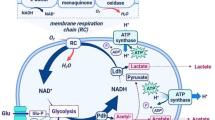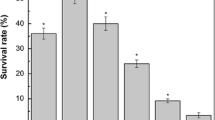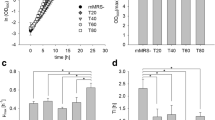Abstract.
The lactic acid tolerance response (LATR) of the lactic acid bacterium Lactococcus lactis subsp. lactis has been studied. A dramatic increase in survival to a severe acid stress (pH 3.9) was obtained by preexposing the cells for 30 min to a mildly acid shock at pH 5.5. Whole-cell protein extract analysis revealed that during the acid tolerance response 33 polypeptides are induced over the level of naive cells. Among these are the major heat shock proteins DnaK and GroEL. In conjunction with a previous report (Hartke et al. 1994), the results establish that L. lactis can adapt to lactic acid exposure in two different ways: a logarithmic phase LATR, which may be activated by protons, and a stationary-phase LATR, which needs no activation by protons. Both systems are independent of de novo protein synthesis.
Similar content being viewed by others
Author information
Authors and Affiliations
Additional information
Received: 8 February 1996 / Accepted: 11 March 1996
Rights and permissions
About this article
Cite this article
Hartke, A., Bouché, S., Giard, JC. et al. The Lactic Acid Stress Response of Lactococcus lactis subsp. lactis . Curr Microbiol 33, 194–199 (1996). https://doi.org/10.1007/s002849900099
Issue Date:
DOI: https://doi.org/10.1007/s002849900099




